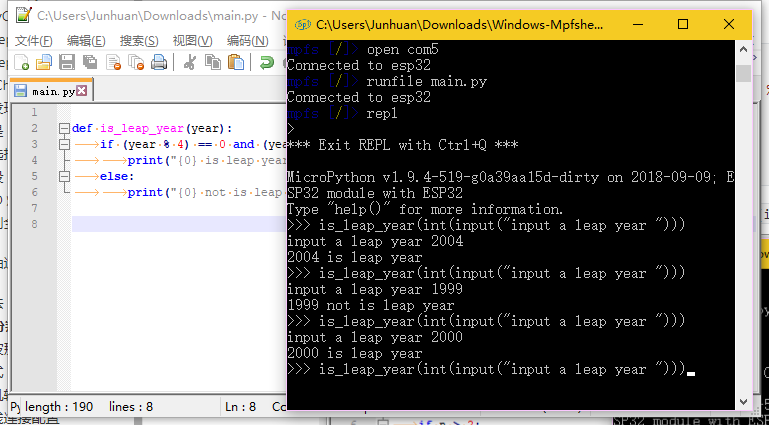Difference between revisions of "1 The basic algorithm"
(→Enter the year to determine the leap year) |
|||
| Line 10: | Line 10: | ||
The code is as follows :(can be placed in main.py): | The code is as follows :(can be placed in main.py): | ||
def is_leap_year(year): | def is_leap_year(year): | ||
| − | + | if (year % 4) == 0 and (year % 100) != 0 or (year % 400) == 0: | |
| − | + | print("{0} is leap year".format(year)) | |
| − | + | else: | |
| − | + | print("{0} not is leap year".format(year)) | |
first in the interpreter using runfile main.py and then run it in the repl | first in the interpreter using runfile main.py and then run it in the repl | ||
Revision as of 22:37, 20 February 2019
Implement the basic algorithm
After we learned some basic hardware controls in the last chapter, let's make up our basic software lessons.
Enter the year to determine the leap year
A leap year is a noun in the Gregorian calendar. Common year: a year that is divisible by 4 but not by 100 is a common leap year. (2004 is a leap year, 1999 is not); Century years: leap years are those divisible by 400.
The code is as follows :(can be placed in main.py):
def is_leap_year(year):
if (year % 4) == 0 and (year % 100) != 0 or (year % 400) == 0:
print("{0} is leap year".format(year))
else:
print("{0} not is leap year".format(year))
first in the interpreter using runfile main.py and then run it in the repl
is_leap_year(int(input("input a leap year ")))
